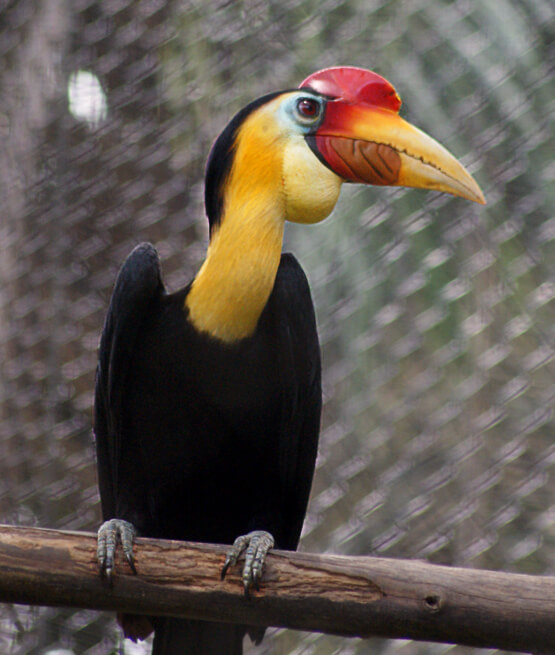Facts About Wrinkled hornbill
The Wrinkled Hornbill, also known as the Sunda Wrinkled Hornbill, is a captivating medium-large bird native to the dense forests of the Thai-Malay Peninsula, Sumatra, and Borneo. Measuring approximately 70 cm in length, this bird is easily identified by its large bill, which is fused to its skull. Its predominantly black plumage is accented by a striking blue eye-ring and a tail that is either white or rufous-tipped. A notable difference between males and females is that males display yellow feathers on various parts of their head and neck.
In its forest habitat, the Wrinkled Hornbill primarily consumes a diet of fruits, especially figs, but also feeds on small animals such as frogs and insects. They obtain all the moisture they need from their food and do not drink water directly. The calls of the Wrinkled Hornbill—a harsh "Kak-kak" or a deep "Row-wow"—can travel great distances through the forest, making their presence known even when they are not visible.
Wrinkled Hornbills are known for their lifelong monogamous relationships. They nest in tree cavities, with the female sealing herself inside using mud and droppings, leaving just a small opening through which the male can pass food. When the chicks are ready, the female breaks out of the nest. Remarkably, the Wrinkled Hornbill was first successfully bred in captivity in 1988.
Unfortunately, due to habitat loss from deforestation, the conservation status of the Wrinkled Hornbill has deteriorated. In 2018, they were uplisted from Near Threatened to Endangered on the IUCN Red List.

 Thailand
Thailand